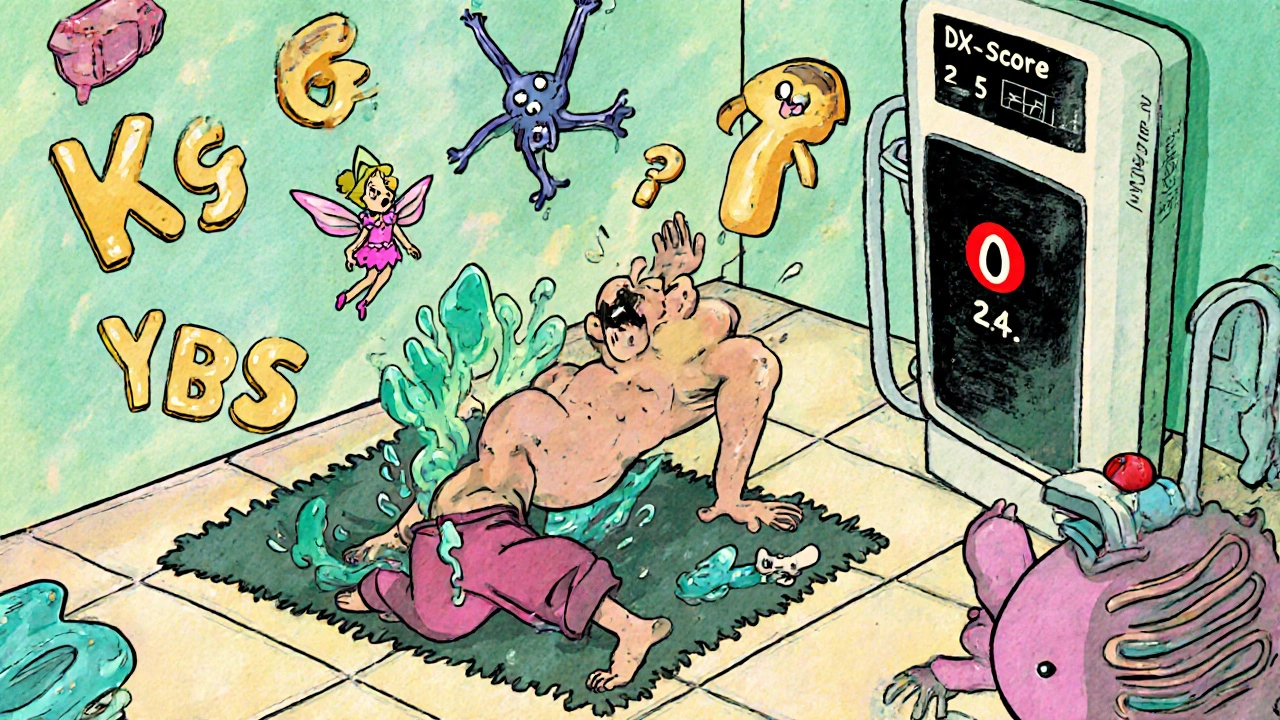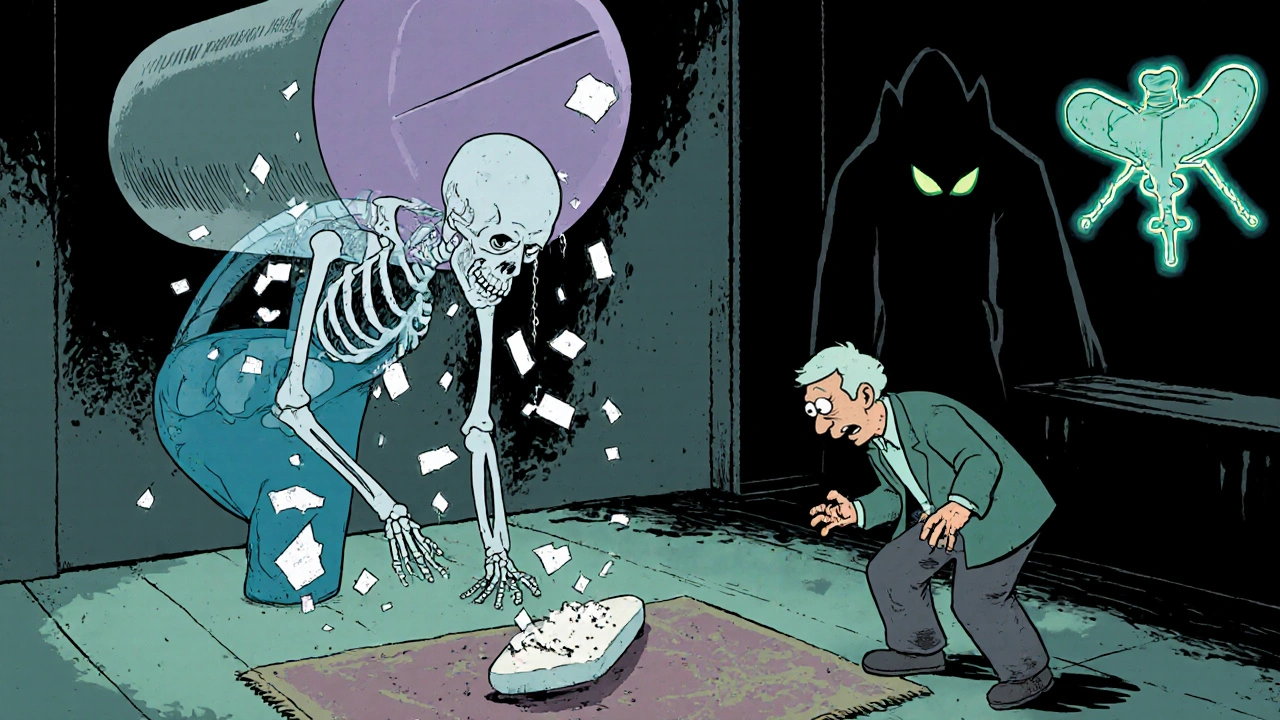SGLT2 Inhibitor Fracture Risk Assessment Tool
This tool helps you understand your personalized fracture risk when taking SGLT2 inhibitors. Based on data from major clinical trials, it provides evidence-based guidance for you and your doctor.
Your Health Information
When you’re managing type 2 diabetes, choosing the right medication isn’t just about lowering blood sugar. It’s about protecting your whole body - heart, kidneys, and yes, even your bones. SGLT2 inhibitors like canagliflozin, empagliflozin, and dapagliflozin have become popular because they do more than just control glucose. They cut heart failure hospitalizations, slow kidney decline, and help with weight loss. But around 2015, something unexpected popped up: a possible link to broken bones. Not for all of them. Not for everyone. But enough to make doctors pause and rethink who should take what.
Why Did Canagliflozin Raise Red Flags?
The first big warning came from the CANVAS trial in 2017. Researchers found that people taking canagliflozin (Invokana) at the 300 mg dose had about 26% more fractures than those on placebo. Most of these weren’t from car crashes or sports injuries - they happened after simple falls, like slipping off a curb or tripping over a rug. The fractures were mostly in the hip, wrist, and upper arm. That’s the kind of damage you see in older adults with thinning bones.
What made it worse was how fast it happened. Some fractures showed up within 12 weeks of starting the drug. That’s not enough time for bone density to drop naturally. Something else had to be going on. Follow-up studies showed canagliflozin caused small but measurable bone mineral density (BMD) loss - about 1% at the hip and spine over two years. That might sound small, but for someone already at risk, it’s enough to tip the scales.
Why does this happen? It’s not one thing. It’s a mix. Canagliflozin makes you pee out more sugar, but it also pulls out phosphate. That tricks your body into thinking it’s low on phosphate, so your parathyroid gland kicks in and starts breaking down bone to release minerals. At the same time, some women on canagliflozin saw their estrogen levels drop - and estrogen is a key protector of bone. Then there’s the drop in body weight. Losing 2-4 kg sounds good, but it can mean less mechanical stress on bones, which weakens them over time. And let’s not forget: SGLT2 inhibitors can cause dizziness or low blood pressure when standing up. That increases fall risk. So you’ve got weaker bones, and a higher chance of falling.
Not All SGLT2 Inhibitors Are the Same
This is where things get clearer - and more important. The problem isn’t the whole class. It’s mostly canagliflozin, especially at the higher 300 mg dose. Empagliflozin (Jardiance) and dapagliflozin (Farxiga) have shown no increased fracture risk in large trials like EMPA-REG OUTCOME and DECLARE-TIMI 58. A 2023 meta-analysis of nearly 21,000 patients found no overall link between SGLT2 inhibitors and fractures - but when they pulled out canagliflozin, the risk disappeared.
The FDA updated its label for canagliflozin in 2016 to include a formal warning about fractures. It didn’t do the same for empagliflozin or dapagliflozin. That’s not an accident. It’s based on real data. European regulators took a broader approach and put class-wide warnings on all SGLT2 inhibitors. But in the U.S., the guidance is more precise: the risk is tied to one drug, not the whole group.
Real-world prescribing patterns reflect this. Between 2017 and 2022, canagliflozin prescriptions in the U.S. dropped by 22%. Meanwhile, empagliflozin and dapagliflozin prescriptions rose by over 40%. Why? Doctors started avoiding canagliflozin in patients with osteoporosis, a history of falls, or low bone density. They kept prescribing the others.

Who Should Be Cautious?
If you’re over 65, have had a previous fracture, or have osteoporosis (T-score of -2.5 or lower), canagliflozin is generally not recommended. The American Geriatrics Society’s Beers Criteria even lists it as a “potentially inappropriate medication” for older adults with bone issues. The American Association of Clinical Endocrinologists says you should check bone density before starting canagliflozin in these patients - and if it’s too low, pick something else.
But here’s the catch: diabetes itself harms bone health. High blood sugar over time reduces bone quality, increases inflammation, and raises fracture risk. So if you’re avoiding canagliflozin because of bone concerns, you’re not eliminating risk - you’re just switching to another drug that might not help your heart or kidneys as much.
For most people without prior fractures or low bone density, the benefits of SGLT2 inhibitors still outweigh the risks. Empagliflozin and dapagliflozin are safe choices even for older adults. In fact, one 2023 study in JAMA Network Open found that SGLT2 inhibitors had lower fracture rates than GLP-1 agonists or DPP-4 inhibitors in high-risk groups.

What Should You Do?
Don’t stop your medication without talking to your doctor. But do ask these questions:
- Which SGLT2 inhibitor am I on?
- Have I had any fractures before?
- Do I have osteoporosis or low bone density?
- Have I had falls or dizziness since starting this drug?
If you’re on canagliflozin and have any of those risk factors, ask about switching to empagliflozin or dapagliflozin. If you’re on one of the safer ones and doing well, there’s no need to change.
For everyone, regardless of drug choice, take steps to protect your bones:
- Get a DXA scan if you’re over 65 or have risk factors
- Make sure you’re getting enough calcium (1,000-1,200 mg/day) and vitamin D (800-1,000 IU/day)
- Do weight-bearing exercises like walking or resistance training
- Remove tripping hazards at home - loose rugs, cluttered floors, poor lighting
- Review other medications that cause dizziness, like diuretics or sleep aids
The Big Picture: Benefits Still Outweigh Risks
It’s easy to get scared by headlines that say “diabetes drug causes fractures.” But the truth is more nuanced. For most people, SGLT2 inhibitors are safe and life-saving. The fracture risk is real - but it’s not class-wide. It’s mostly tied to one drug at one dose in one group of people.
The American Diabetes Association now says SGLT2 inhibitors as a class don’t increase fracture risk - with a clear footnote: canagliflozin is the exception. Their Fracture Risk Assessment Tool (FRAX) only adds 0.5 points to your score if you’re on canagliflozin. No point for the others.
Doctors are getting better at sorting this out. A 2022 survey showed that 82% of endocrinologists avoid canagliflozin in patients with osteoporosis, but only 34% hesitate with dapagliflozin. That’s progress. The data has caught up with clinical experience.
If you’re on an SGLT2 inhibitor and worried, talk to your doctor. Don’t assume all of them are the same. Don’t assume the risk is unavoidable. And don’t stop taking a drug that’s helping your heart and kidneys - unless you have a better, safer alternative.
Diabetes isn’t just about sugar. It’s about your whole body. And protecting your bones is part of that.






